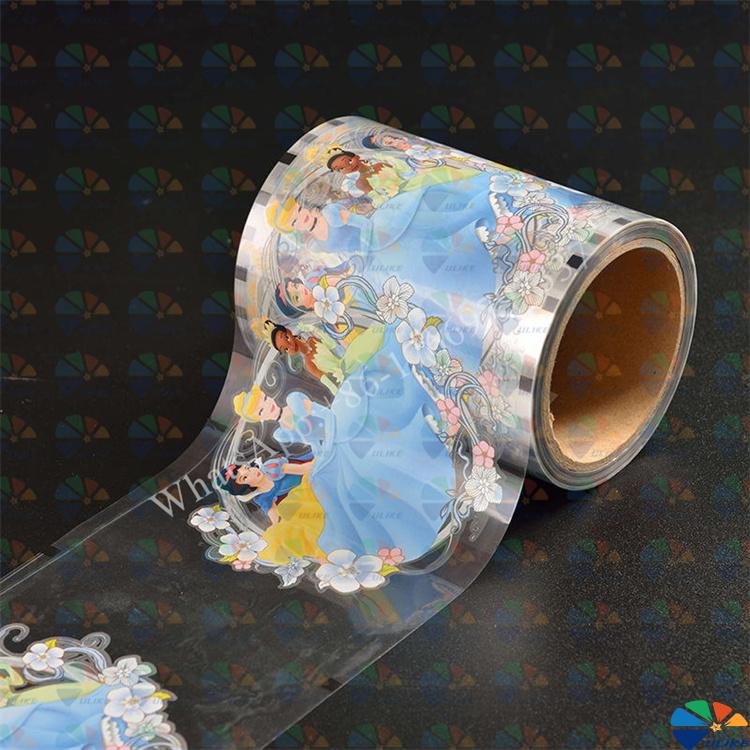Inspection methods for thermal transfer films
Inspection methods for
thermal transfer films (I)
1 The relationship between thermal transfer films and inspection
Inspection is an essential process in the thermal transfer process. As an important link in the entire printing process, it is closely related to other links.
Only through quality inspection and strict control, can we ensure that unqualified raw materials are not put into production, unqualified semi-finished products are not transferred, unqualified parts are not assembled, and unqualified printed products are not shipped out of the factory, so as to truly ensure the printing quality of the product. How to inspect the quality of thermal transfer films? Next, we will introduce several common inspection methods.
2 Inspection method for thermal transfer films: overall appearance inspection
The film should be inspected in a production environment with sufficient light, no dust or little dust. The thermal transfer printing film should be placed 30-40 cm away from the line of sight for appearance inspection. Check whether the surface of the finished product is neat, whether the graphics are clear and complete, whether there is obvious dirt, incompleteness, knife lines, creases, wrinkles or pull lines, etc. After careful inspection, none of the above phenomena appear, and the quality is judged to be qualified.
3 Thermal transfer film inspection method 2: color difference evaluation
Place the thermal transfer printed film on the viewing table, adjust the light source of the viewing table to D65, keep the light source distance at about 8 cm, check the batch sample film, gradually compare and check the color. When there is no obvious difference between the color and the batch sample film, the quality is judged to be qualified, otherwise it is unqualified.
Thermal transfer film color difference evaluation large picture
4 Thermal transfer film inspection method 3: overprint accuracy
The thermal transfer operator uses a 20x scale microscope to measure the accuracy of overprinting, and divides and evaluates it according to the design draft and the process requirements of the product. Generally, the error of ±0.15 is the best, the error within ±0.25mm is considered qualified, and the error exceeding ±0.255mm is considered unqualified.
5. Thermal transfer film inspection method 4: Dot blockage
Visually inspect the film surface to see if there are any missing dots, dot blockage, or pinholes on the film. If these occur, first check if there are any problems on the electronic engraving plate, and carefully analyze the causes and prescribe the right remedies; if these do not occur, it is assessed as qualified.

![af]() Afrikaans
Afrikaans![sq]() Albanian
Albanian![am]() Amharic
Amharic![ar]() Arabic
Arabic![fr]() French
French![es]() Spanish
Spanish![ru]() Russian
Russian![de]() German
German![hy]() Armenian
Armenian![it]() Italian
Italian![ja]() Japanese
Japanese![ko]() Korean
Korean![pt]() Portuguese
Portuguese![hi]() Hindi
Hindi![az]() Azerbaijani
Azerbaijani![ro]() Romanian
Romanian![pl]() Polish
Polish![th]() Thai
Thai![el]() Greek
Greek![eu]() Basque
Basque![en]() English
English![zh-CN]() Chinese (Simplified)
Chinese (Simplified)![zh-TW]() Chinese (Traditional)
Chinese (Traditional)![be]() Belarusian
Belarusian![bn]() Bengali
Bengali![bs]() Bosnian
Bosnian![bg]() Bulgarian
Bulgarian![ca]() Catalan
Catalan![ceb]() Cebuano
Cebuano![ny]() Chichewa
Chichewa![co]() Corsican
Corsican![hr]() Croatian
Croatian![cs]() Czech
Czech![da]() Danish
Danish![nl]() Dutch
Dutch![eo]() Esperanto
Esperanto![et]() Estonian
Estonian![tl]() Filipino
Filipino![fi]() Finnish
Finnish![fy]() Frisian
Frisian![gl]() Galician
Galician![ka]() Georgian
Georgian![gu]() Gujarati
Gujarati![ht]() Haitian Creole
Haitian Creole![ha]() Hausa
Hausa![haw]() Hawaiian
Hawaiian![iw]() Hebrew
Hebrew![hmn]() Hmong
Hmong![hu]() Hungarian
Hungarian![is]() Icelandic
Icelandic![ig]() Igbo
Igbo![id]() Indonesian
Indonesian![ga]() Irish
Irish![jw]() Javanese
Javanese![kn]() Kannada
Kannada![kk]() Kazakh
Kazakh![km]() Khmer
Khmer![ku]() Kurdish (Kurmanji)
Kurdish (Kurmanji)![ky]() Kyrgyz
Kyrgyz![lo]() Lao
Lao![la]() Latin
Latin![lv]() Latvian
Latvian![lt]() Lithuanian
Lithuanian![lb]() Luxembourgish
Luxembourgish![mk]() Macedonian
Macedonian![mg]() Malagasy
Malagasy![ms]() Malay
Malay![ml]() Malayalam
Malayalam![mt]() Maltese
Maltese![mi]() Maori
Maori![mr]() Marathi
Marathi![mn]() Mongolian
Mongolian![my]() Myanmar (Burmese)
Myanmar (Burmese)![ne]() Nepali
Nepali![no]() Norwegian
Norwegian![ps]() Pashto
Pashto![fa]() Persian
Persian![pa]() Punjabi
Punjabi![sm]() Samoan
Samoan![gd]() Scottish Gaelic
Scottish Gaelic![sr]() Serbian
Serbian![st]() Sesotho
Sesotho![sn]() Shona
Shona![sd]() Sindhi
Sindhi![si]() Sinhala
Sinhala![sk]() Slovak
Slovak![sl]() Slovenian
Slovenian![so]() Somali
Somali![su]() Sudanese
Sudanese![sw]() Swahili
Swahili![sv]() Swedish
Swedish![tg]() Tajik
Tajik![ta]() Tamil
Tamil![te]() Telugu
Telugu![tr]() Turkish
Turkish![uk]() Ukrainian
Ukrainian![ur]() Urdu
Urdu![uz]() Uzbek
Uzbek![vi]() Vietnamese
Vietnamese![cy]() Welsh
Welsh![xh]() Xhosa
Xhosa![yi]() Yiddish
Yiddish![yo]() Yoruba
Yoruba![zu]() Zulu
Zulu


